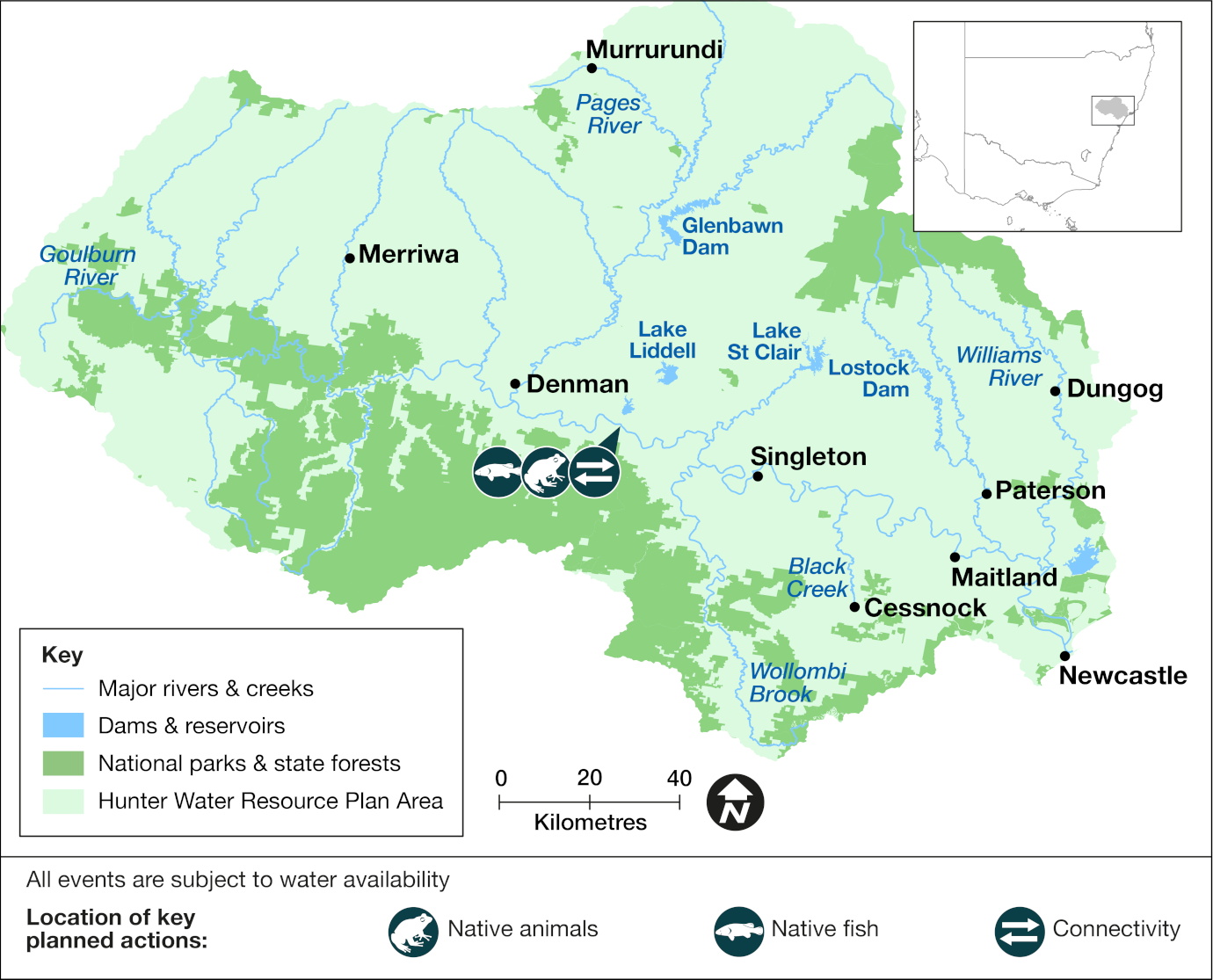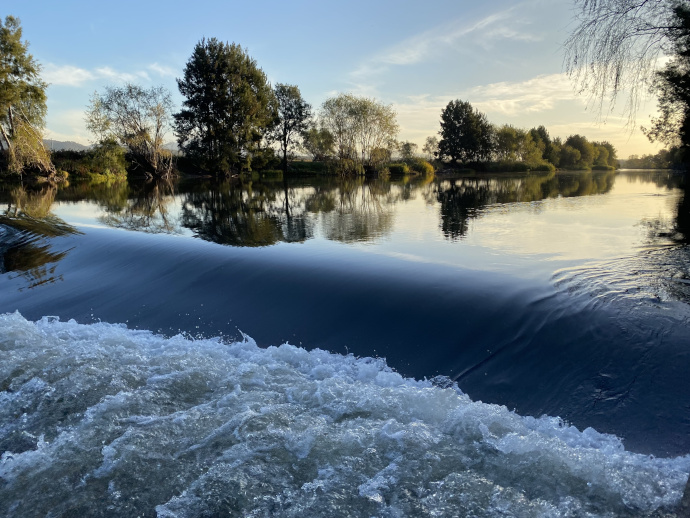Water that is allocated and managed specifically to improve the health of rivers, wetlands and floodplains is known as water for the environment.
Our local NSW environmental water management teams work with local communities, Aboriginal representatives, partner agencies, water users and other stakeholders to ensure the best use of water for the environment in each catchment, including how its use is prioritised.
Water for rivers and wetlands
In 2024–25, managed environmental flows will target a range of outcomes across the Hunter catchment, including:
- native fish migration
- Aboriginal water management priorities
- longitudinal river connectivity.
Wetter conditions observed in 2021–22 continued in 2022–23. Water for the environment was delivered during the 2022–23 water year to build on the benefits of wet conditions. Downstream migration of native fish and river connectivity was facilitated by water for the environment in 2022–23 and 2023–24.
In the year ahead, water managers will likely deliver flows to facilitate native fish migration, particularly around Liddell Weir. These flows will support native fish movement and dispersal opportunities throughout the system.
Management of water for the environment in the Hunter catchment will continue to focus on reconnecting the Hunter River. Water managers will likely deliver flows in winter 2025 and may deliver flows in spring 2024.
The environmental water allowance was reset to the full allowance on 1 July 2024.
Partnering with Aboriginal peoples
Water for Country is environmental water use planned by the department with Aboriginal peoples to achieve shared benefits for the environment and cultural places, values and/or interests.
We are working to support Aboriginal people to participate in environmental water planning and the use of the environmental water allowance in the Hunter catchment.
In 2024–25 we will:
- continue to build relationships with Aboriginal communities
- support Aboriginal people to include priorities in the Hunter–Paterson Long-Term Water Plan
- facilitate an environmental water release that shares benefits with Aboriginal people.
Weather and water forecast
As of June 2024, the El Niño–Southern Oscillation outlook is neutral. That is, neither La Niña nor El Niño conditions are favoured as oceanic and atmospheric indicators have returned to neutral levels. International climate models suggest neutral El Niño–Southern Oscillation conditions will persist through the southern winter, but there are some signs that La Niña conditions could form later in the 2024/25 water year.
The 3-month rainfall outlook for the Hunter is above the median from July to September, which may increase the current soil moisture and run-off efficiency within the catchment. Above-average temperatures are predicted from July to September 2024.
Water managers have prepared watering plans that consider a range of weather and water availability scenarios. This is known as resource availability scenario planning. Although dam levels remain high, a degree of uncertainty remains around resource availability.
Resource availability scenario
This table provides details about how we plan for different resource availability scenarios. Wet conditions are forecast for the Hunter catchment in 2024–25, which means water availability planning will follow the ‘wet’ scenario.
Current forecast
|
|
Very dryMain aim: protect - avoid critical loss |
|
|
DryMain aim: maintain - maintain river functioning |
|
|
ModerateMain aim: recover - improve ecological health and resilience |
Current forecast |
Wet to very wet Main aim: Enhance |
Key planned actions
Native animals
Planned releases support a diversity of suitable habitats for water-dependent animals, including macroinvertebrates, frogs, platypus and turtles, by increasing resource availability and productivity and providing opportunities for breeding and recruitment. Inundation of connected ponds may provide breeding opportunities for frog species.
Native fish
Water managers will deliver flows to support native fish breeding and dispersal in the Hunter catchment. Releases in winter encourage downstream migration into the Hunter estuary for spawning, and water releases in spring and summer support the upstream migration of female adults and juvenile fish.
Connectivity
Water managers will look for opportunities to provide longitudinal connection along the Hunter River to encourage the dispersal of native fish into the system.
Map of proposed annual priority targets in the water resource plan area 2024–25



